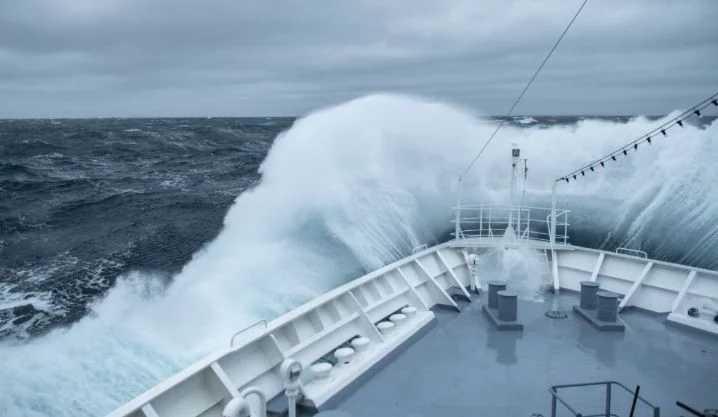When you’re at sea, there are few things that command more respect than nature — and of nature’s most intense events is the Tropical Revolving Storm, or TRS. To seafarers, knowing what a TRS is and how to behave when one is approaching isn’t just necessary — it’s vital.
What is a TRS?
A Tropical Revolving Storm is a large, organized complex of clouds, thunderstorms, and strong winds that develops over warm ocean waters in the vicinity of the equator. It forms around a central low-pressure system, gradually building in intensity. Depending on where it develops, it might be called a cyclone, hurricane, or typhoon.
Here’s how the naming differs around the globe:
Hurricanes: These occur in the North Atlantic Ocean, the Caribbean Sea, and the Eastern North Pacific.
Typhoons: Found in the Western North Pacific — affecting countries like Japan, the Philippines, and parts of Southeast Asia.
Cyclones: This term is used in the South Pacific, Indian Ocean, and Bay of Bengal regions.
Cyclones within the Indian Ocean and South Pacific
Typhoons in the Northwest Pacific
All these are types of TRS — only the name is different.
Main Characteristics of a TRS
Low-pressure center (storm eye)
Spinning bands of thunderstorms
It spins with powerful winds — turning clockwise below the equator and counter-clockwise above it, all due to the Coriolis effect.
Heavy rain and high seas
How Does a TRS Affect Ships?
TRS events are extremely hazardous to ships. The high winds can lead to loss of steering control, and high seas can cause damage to cargo, injury to crew, or even capsizing. Ships in a TRS may also experience equipment failure or drift into hazardous waters.
So what should a professional mariner do when there is a suspected or actual TRS in close proximity?
What to Do in a TRS
- Early Detection
Watch weather broadcasts from reliable sources such as INMARSAT, NAVTEX, or SafetyNet.
Make use of radar and satellite information to detect storm activity.
Observe indications such as a falling barometric pressure, abrupt wind direction shift, and rising swell.
- Plot the Storm’s Position
Use available weather reports and onboard instruments to estimate how far the tropical revolving storm (TRS) is and in which direction it lies
Employ the twelve-hour rule or concept of dangerous semicircle to determine your safest course.
- Figuring Out Your Ship’s Location in Relation to the TRS
Once you’ve gauged the storm’s position, it’s critical to determine whether you’re in the dangerous or safe semicircle of the system.
If you’re in the Northern Hemisphere, keeping the wind on your starboard bow generally places you in the safer semicircle.
In the Southern Hemisphere, the safe zone is when the wind is on your port bow.
On the flip side:
If the wind is hitting your starboard quarter in the Northern Hemisphere, or your port quarter in the Southern Hemisphere — you’re likely in the dangerous semicircle and must act swiftly
In the eye: Peaceful winds, but do not be deceived — the storm comes back with vengeance from the opposite direction.
- Alter Course Early
Don’t wait for acknowledgement. If your planned track crosses the TRS course, change heading and remain clear — normally at least 250-300 nautical miles.
- Mooring the Ship
Tie down loose equipment.
Secure hatch covers and watertight doors.
Slow down if necessary to keep control and minimise stress on the hull.
- Inform rescue crew
Ensure all crew members understand the approach of the storm and their emergency responsibilities.
Conduct safety checks and review muster protocols.
- Maintain Communication
Stay in touch with nearby vessels and coastal authorities.
Report your position and intentions clearly.
Final Thoughts
TRS can be mistaken as another weather term, but for mariners, it’s a real danger that requires swift action. The sea doesn’t grant second opportunities, and being in control is the best defence. Through planning, tracking, and seamanship, mariners can keep from experiencing the brunt of a storm and salvage crew and cargo.
Recall, Mother Nature does not bargain — but a shrewd mariner does not await her to request


